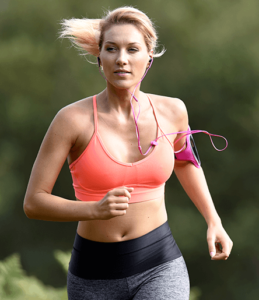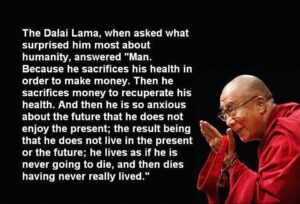Spinal Health
Do you know that spinal health is really important, but do you know how to take care of your spine so that it’s healthy? Do you know that there’s some really basic foundational rules that have been studied that are more advantageous for your spine to be healthy, but do you know what those rules are? Do you know how to apply those rules to the exercises that you do to keep your spine healthy? Well, stay tuned while I go into these different rules, these different exercises that will help your spine be healthy.
I want to spread the word that there is more available to you in terms of corrective exercises, keeping your body strong and balanced than you see now in traditional sources. There is a better way to address your body and I want to impart that information to as many people as possible, because if you’re going to take the time to put the effort in to do corrective exercises or preventive exercises and you’re okay with the struggle of going through it, you’re okay with trying to learn and do something new, you should be efficient. So I want to impart this information so you can be efficient with your stretches and exercises so that you can live your life towards fullest.
Now, quick side note, my videos are for information and for you to get to open up your mind to see what else you can do and to think a little bit. It’s not to give you a canned set of exercises that you can take and try and figure out, because I don’t know you. The protocols we talk about are different for each person, and it would be super irresponsible for me to do that. So if you’re just looking for a bunch of exercises, then you can probably turn off the video now. But if you’re willing to open the door a little bit, see what’s possible, see what you can do, then please stay tuned.
Real quick though, take a second to subscribe. It’s right there on the bottom right. Subscribe and then hit the bell, and that way you be subscribed and you’ll be notified each time we put up videos about holistic health and fitness so we can show you the best way to work with your body so that you live your best life.
Some Background On Spinal Health
So there’s a lot of misunderstanding about the spine or lack of information about the spine, so I think going through some basic points about the spine will help you give a global view of what we’re trying to achieve here. So first and foremost, the spine needs to be healthy because it, along with your feet, your TMJ, your eyes and your ears communicate back to the brain to tell your body where you should be in space. That’s called your gravity line. If all them are working perfectly, then you can stay within this four degree cone and manage it, and it’ll go a long way to being healthy and move well. But if that information is off from the spine, it goes to the brain and it gives bad information. So it gives bad information, then your body adjusts to bad information. Now, you think this is straight when it should be this all because the spine is not as healthy as it should be.
The spine also needs to be healthy for proper movements. There’s a rule or a study that was done by Bergmark here, a scientist in the United States in the ’80s, he talks about PIT and DAM. PIT stands for prepare, imagine and think. DAM stands for do, act and move. The spine and the transversospinalis muscles are the first step into achieving that proper movement via PIT. So when you have a thought in your brain to do a movement, that has to go down in the spine and out to the extremities. If those PIT muscles, in this case, the spine and transversospinalis, are now functioning properly, that the information gets jumbled as it goes out to your body and now you move funny, not because you don’t know that you’re not moving funny or because you’re don’t know how to move. It’s because the information intrinsically to your body is incorrect. So keeping your spine healthy will allow these PIT muscles to tell these do, act and move muscles to move more efficiently.
THe position Of Your Spine For Health
One way the spine needs be healthy is that it needs to be lined up properly and have a proper amount of space. Lined up means that the bones are where they need to be and the trabecula that are lines of force within the bone are also lined up properly. Trabecula are like the rebar in this building. They’re inside the concrete. They help transmit force so it doesn’t end up in weird places. It’s the same thing in your spine. Then you be lined up, so those forces travel down evenly.
There needs to be enough space in your vertebral joints so that, one, the nerve roots that come from there that go to different organs and fascia and muscles and all that stuff communicate properly. There needs to be enough space so that you can move properly. There needs to be enough space so that you can heal your spine properly. If you don’t have enough space, if it’s not lined up properly, then you get a whole bunch of fun things like osteoarthritis, bulges, herniations, prolapses, anterolisthesis, retrolisthesis, stenosis, all these really enjoyable things that nobody ever wants.
There are some factors that help keep the spine healthy. There’s two rules to or laws that were studied, Euler’s Law and Delmas Index. Euler’s Law says that the resistance of your spine, the strength, is equal to the number of curves plus one, R equals N-squared plus one. So if you have four good curves at your sacrum, lumbar, thoracic, and cervical, via the equation, the number is 17. If you lose one of those curves, let’s say your back flattens out or you get whiplash, or you have a forward head posture, whatever the case may be, you’ve lost one curve because of bad posture, bad training, bad education in your body, your resistance now goes down to 10. That’s about a 50% difference in strength, resistance, because you’ve lost one curve.
Delmas Index talks about the shape of your spine. So you want to ever have a nice moderate shape of your spine with four total curves. Those curves can’t be too big or you’re too mobile and you can’t resist anything or you can’t resist some, but not a ton, or you can’t be too attenuated, too stiff, or you’re too stiff and you can’t react to forces and you’re not mobile. So Euler’s Law and Delmas Index are very important to the health and wellbeing of your spine.
Spinal Health means the spine should not be a columb
The spine is not a spinal column as you may have heard. A column is a building where things are stacked upon each other to the top. Your spine is not stacked upon each other because you don’t want the bones touching and straight up and down. If the bones were touching, you could osteoarthritis. If they’re up and down, like I just talked about, you wouldn’t have the proper curves and your spine wouldn’t have the resistance you need. Your spine is a structure that should have strength and mobility at the same time.
Your spine sits between your two girdles, your shoulder girdle, your cervicothoracic diaphragm, and your pelvic girdle, your pelvic diaphragm. It’s held together by stays. Now, stays as a nautical term that means ropes or pulleys that holds the mass in place. So these ropes and pulleys hold the spine in place. The main stays of your body, these ropes and pulleys, are your abs, every single one of them, your TVA, internal oblique, external oblique, rectus abdominis, and please don’t forget, your thoracic diaphragm. These abdominal stays will hold the spine in place and allow it to move if you train the abs properly.
The back muscles work in conjunction with these ab muscles to not only help with these movement and stability, but also to help keep getting the compression of the abdominal cavity. Part of the being healthy in your body is having proper pressure in your body. And so, if you don’t have proper pressure in your abdominal cavity, it puts too much pressure on your back. So we’ve all seen the people with the big gigantic guts, right? They have no abs. Now, the pressure goes too far forward. That takes my spine and pulls it forward, so my spine is always arching going back and being pulled forward, which causes a lot of pain.
Now, it’s this synergy of all these different rules and studies and information about spinal health that you need to put together to perform a program for you because you can’t just take this information and dogmatically apply it. If you go, “Okay. Well, I understand this information now, but also where is my body at? What am I capable of? What can I do at this at moment?” So we’re going to get into that after this little break. But first, I want to know, are you looking for spinal health and wellness? If you are looking for spinal health, just let me know in the comments.
How to start thinking of your exercise program for spinal health
Okay. So let’s start digging in and how you can apply this information I gave you and how to improve your spine. So there’s one thing you don’t want to do is go directly just at the spine, because if your spine is being held together by your pelvic girdle and your shoulder girdle and your pelvic girdle, your shoulder girdle are off, your spine is always going to be off, because remember, those stays, those guidewires, those ropes via the abs and back are pulling the spine in a bad place. So, a good thing to do is to treat it holistically, like I’ve been talking about, so you understand what area of spine do you need to focus on. Is it your lower back, mid-back, neck, combination? Okay. You can work in those specifically, but you need to put something into your program to balance the shoulder girdle and the pelvic girdle.
You understand that these muscles allow for flexibility and movement. So if you don’t train these muscles totally, you’ll end up not getting results. Well, which muscles do you need to train? That simple. You go through your body and you find out which ones are tight, stretch them, which ones are weak and strengthen them, but you have to be very specific, because you can’t just say, “Oh, I want to train my hip muscle.” You have to understand the hip muscle is three different fibers. Those fibers go anterior, front, middle and posterior, back. So which one of those are weak or are tight? You need to work on those because that muscle helps with stability. All the muscles through there need to be addressed as such.
Now, as you’ve addressed and are addressing what’s going with your shoulder girdle, what’s going with your pelvic girdle, what’s going with the abs and back muscles, you’re working on those, now, how should you work your spine? Well, I understand that your spine moves in a bunch of different directions and most of those directions cause compression at the vertebral joint. So if I turn and twist like that in my spine, I’m making the segment smaller, but as we talked about before, the best thing to do for your body is to line up those vertebral bones and to give enough space between the vertebral joints to allow the spine to be healthy.
ELDOA for spinal health
Well, the best technique I have come across to bring yourself back to that place is called ELDOA. It’s fancy French acronym, but it basically means I want to decoapt and bring my spine back to normal. You see, one of the actions your spine takes is called coaptation. It means the spine always wants to come towards each other and be compact to stay in place, and that’s generally good unless a bunch of those joints are out place and it’s compact and out of place. So if I try and do any other move, a side bending, a rotation, a flexion, an extension, I will cause some cord of compression and sliding of the vertebral bodies, which won’t line it back up.
But by doing an ELDOA, I pull that spinal cord globally back in place, allowing those joint, those bones to go back in place, allowing through a chemical process that water to get back into the disc and rehydrate it and allowing the spinal to become normalized without any issues of hurting myself, and that’s the whole goal is you want to normalize and strengthen body without causing more damage. You can also be very precise with ELDOA’s, which is another reason I like him because along with elongating and open up the spine to allow for normalization, you can be very precise by targeting the different segments. So, you globally get yourself nice and tall, but then by positioning your arms and legs in different ways, the force vectors where the force ends up can be targeted to each specific joint.
Now, you could do stuff like the McKenzie press up, but that to me is not specific. So if I just lay in the ground and push myself up, then one, I don’t know if I have some sort of facet joint problem, which would cause more pain, but two, I don’t really know exactly what level I can focus on. You can also do some sort of inversion table or some sort of hanging from a bar, but again, you can’t be specific to what area you need, and then at the same time for that, there’s not a lot of education going on because there’s passive line there which allows opening, but then soon as you get off and walk around, the education in your body is thinking something different. As opposed to you doing ELDOA, you tell it, “No, I don’t want you to be here. I want you to be here.” And then when you’re done, it stays approximate right there and you progress as you go along through the days, months and years.
Phew, that’s a lot of information. I apologize, but unfortunately that’s the body. The body is not this linear thing like blocks that you put one on top of each other. It’s a biotensegrity structure that’s complex. So if you’re looking for solutions for your body, if you approach it in linear manner, like I said at beginning, just doing three exercises for whatever element you do, then you’re not going to get results. If you think about in terms that we just talked about, complexity and what different things will affect the area that you need to work on, then you’ll start to get results.
So if this resonated with you and you want to find out more, you want to see how this applies towards you, then I have a solution. You can use the link of description to book a discovery session with me and we’ll talk about where you are, where you want to go and what your best options are. If that option is working with me, I’ll give you the different options that I have to work with me. If it resonate with you and you’re just not ready to jump on a call just yet, then no problem. I got a resource for you too. In the description below, you’ll find a link for free resource on how to get out of pain, get mobile and get back to life you want to live. It’s a great report that talks about the different factors that people forget when going through their exercise program.
Stay tuned for this next video on ELDOA method and why it’s not a stretch, but an exercise. Please don’t forget to subscribe and hit that bell, and please like and share this video so that YouTube algorithm can see that it’s beneficial and show it to more people who will also find it beneficial. Please remember, it’s not just working out, it’s building a foundation for a better life.
it’s not just working out, it’s building a foundation for a better life.
Find out more @



Leave a Reply